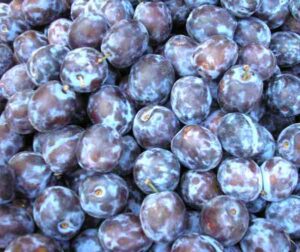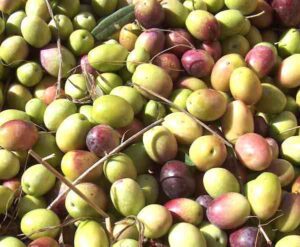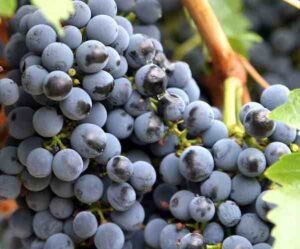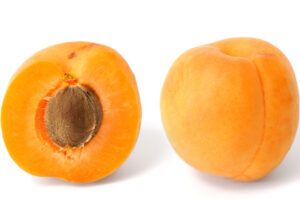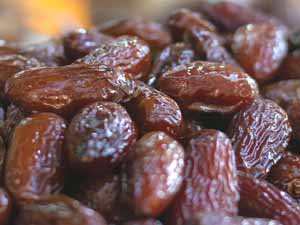Kiwi farming business is becoming very popular gradually and the fruit is very common in it’s native area (central and eastern China). The fruit is also known by some other names. It’s other names include Kiwifruit or Chinese Gooseberry.
Kiwi is actually the edible berry of several species of woody vines in the genus Actinidia. The most common cultivar group of kiwi is oval, about the size of a large hen’s eggs.
The fruit has a thin, fuzzy, fibrous, tart but edible light brown skin and light green or golden flesh with rows of tiny, black, edible seeds. The fruit has also a soft texture with a sweet and unique flavor.
China ranks first in the total production of kiwi. And in the year of 2018, China produced nearly half of the world total of kiwifruit.
Kiwi farming is very common in China and the fruit is native to central and eastern China. The first recorded description of the kiwi fruit dates to the twelve century (during the Song dynasty).
But commercial kiwi farming business spread from China to New Zealand in the early twentieth century, where the first commercial plantings occurred.
The kiwifruit became popular with British and American servicemen stationed in New Zealand during World War II, and later became commonly exported, first to Great Britain and then to California in the 1960s.[1]
Along with China and New Zealand, the kiwi is grown widely in Australia, Chile, Italy, France, Japan, Spain, United States and some other countries.
Kiwi farming is also gaining popularity in India. And in India, the fruit is mostly grown in the states of Arunachal Pradesh, Himachal Pradesh, J & K, Meghalaya, Uttar Pradesh and Kerala.
Kiwifruit Nutritional Benefits
We actually credit apple as the miracle fruit, and it’s true. But the kiwifruit is also a very good fruit which is loaded with essential vitamins and minerals and it works in many ways to give you a nutritional boosts. Here we are describing about the top benefits of kiwifruits.
- The kiwifruit is actually a powerhouse of vitamins and minerals. It is loaded with minerals and vitamins such as calcium, iron, potassium and magnesium and vitamins A, B6, B12 and E.
- It is a very good (actually high) source of vitamin C.
- It is rich in many medicinally useful compounds.
- The fruit can be beneficial in the treatment of sleep disorders.
- It is loaded with dietary fiber. So, it will help in digestion and also for preventing numerous diseases.
- The kiwi is a good source of folate, which is said to be beneficial for pregnant women. Because it helps in the development of the foetus, making is healthy. It is also considered to be good for growing children.[2]
- The vitamins in the kiwifruit are said to be great for the skin. These fruits also contain omega 3 fatty acids.
Advantages of Kiwi Farming Business
Starting commercial kiwi farming has some advantages. Here we are trying to mention the top advantages of this business.
- Commercial kiwi farming is a new business idea in some countries. So, you can take this opportunity for making some profits.
- The price of kiwifruit is higher than some other common fruits.
- The kiwifruit can be grown in most temperate climates with adequate summer heat.
- Where the fuzzy kiwifruit is not hardy, other species can be grown as substitutes.
- Commercial kiwi farming can be a good business idea for the educated unemployed people.
- Production cost is relatively less, as compared to some other business. You just need to have a piece of fertile land.
- Marketing is very easy, and the kiwifruit has good market demand and value. This is a very good advantage of starting commercial kiwi farming business.
How to Start Kiwi Farming Business
Kiwi farming is very easy and simple, and you can start this business even if you are a beginner. The kiwifruits can be grown in different types of fertile soil in temperate climates with adequate summer heat. Here we are trying to describe everything about kiwi farming from planting, caring to harvesting and marketing.
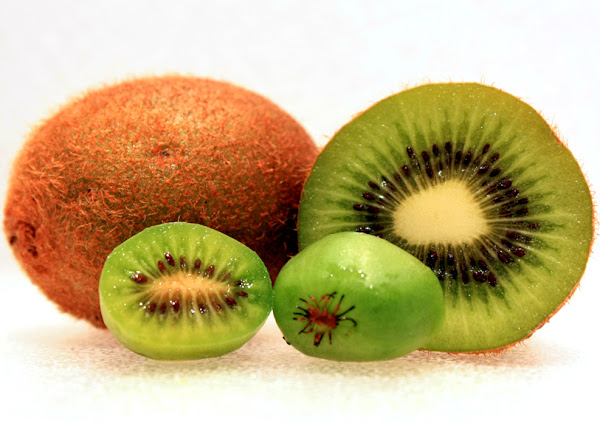
Select a Good Location
First of all, you have to select a very good location for kiwi farming. The selected location must have to be well-drained, fertile and the pH level of the soil should between 5.5 and 6.5 (the plants can also thrive in acidic soil).
The kiwi fruit vines are fairly hardy and grow in a wide range of temperature. But the plants will produce best quality fruits if the selected land has good draining facility and if the soil become very fertile.
The plants also need shelter from wind, adequate moisture throughout the year and protection from autumn and spring frosts. And it will be better if there are good transportation service available in your selected area.
Prepare the Soil
Preparing the solid perfectly is very important for successful kiwi farming business. The kiwi plants grow very well in well-drained and fertile soil. The pH range should be between 5.5 and 6.5.
Regular and adequate watering is also very important for growing kiwi fruits. You don’t have to worry much about watering in the temperate regions with regular rain. But the plants require moderate watering during the dry seasons.
You have to maintain the pH level of the soil perfectly. Lack of adequate watering and rain cause imbalance of pH level in the soil.
Too much water can also cause serious problem for the kiwi plants. Especially in the South Asian countries where rain heavily on monsoon days. Too much rain water is risky for the plants. So, you need to plant the kiwi on the high-ground to water lagging problems.
For land preparation the steep land is contoured into terraces for planting the wiki plants. This system is very beneficial for controlling excessive water during the monsoon days.
For availing maximum sunlight, the rows are to be oriented in a north-south direction. Perfect preparation of the soil is very important for successful establishment of the vineyard. Complete the preparation of the soil within December (preparation of pits, a mixture of farmyard manure and filling of the pits).
The orchards are generally fertilized with 55 kg of phosphorus, 200 of nitrogen and 100-150 kg of potassium per hectare in spring and early summer.
Climate Requirements for Kiwi Farming
The kiwi fruits can be grown in most temperate climates with adequate summer heat.
Best Time for Kiwi Farming
Cultivating the plants in the correct season is very important for good plant growth and maximum production.
The kiwi is not a short time plant, and you will be able to harvest between 30 and 40 times from a single tree. Selection of the variety is very important, and planting season vary depending on the variety.
In most cases, the kiwi plants are panted in the beginning of the year (in the month of January).
Choose a Variety
Choosing the right variety is very important for successful kiwi farming business. Depending on the variety, the fruits are quite variable, although most are easily recognized as kiwifruits because of their appearance and shape. The skin of the fruit varies in size, hairiness and color. The flesh also varies in color, juciness, texture and taste. Some kiwifruits are unpalatable, while others taste considerably better than the majority of commercial cultivars.
Most commonly sold kiwifruit is derived from fuzzy kiwifruit. Other species that are commonly eaten include golden kiwifruit, Chinese egg gooseberry, hardy kiwifruit, Arctic kiwifruit, purple kiwifruit, silver vine and hearty red red kiwifruit.
The planting season and process depend on the variety. So, it is better to contact to local government agricultural facility, and they will be able to choose the best variety for your area. Learn about the planting season of your desired or selected variety, and plant them in the relevant season. Globally recognized and commercially important kiwifruit varieties are Fuzzy, Hardy and Arctic kiwi veins.
Arctic Kiwi: The Arctic kiwi is the most cold tolerant kiwi varieties. The fruits are very sweet in taste and delicious. The fruits are smaller and rarer than the other kiwi vine species.
Fuzzy Kiwi: The fuzzy kiwi is the most common kind of kiwi plants. The fruits are beautiful, sweet in taste and common all over the world. There are a lot of variations in this temperate area fruit (such as Blake, Hayward, Meander and Saanichton). These plants can tolerate 15°F, and below this temperature both the plants and fruits will damage.
Hardy Kiwi: The Hardy kiwi is the newest variety of kiwi. The plants will grow in cold, but in non-frosting areas. The fruits will ripe on the vine in late fall.
The kiwi farming is getting popularity in India gradually. The main kiwi varieties which are cultivated in India are Allison, Abbott, Tomuri, Bruno, Monty and Hayward.
Purchase/Collect Seeds
After selecting your desired variety, purchase seeds from any of your local suppliers. Try to purchase good quality, high yielding and diseases free seeds from any of your local govt. or private seed manufacturer. You can also consider purchasing the seeds online.
You can also collect seeds from the mature kiwifruits. After collecting the seeds, you have to perform a test for finding out the germinate able ones. You can perform seed floating test for finding germinate able seeds. Put the seeds in a pot and put some water into the pot.
Then try to drown the seeds in the water by using your fingers. The seeds that float in the water are disqualified and will not germinate or sprout. Keep the sunk seeds and remove the floating seeds.
Seeds per Acre
Exact amount of seeds per acre depends on the variety and also in it’s plating spacing. The amount is only a few grams of seeds per acre.
Planting
Planting in the proper way is very important for growing healthy and productive kiwi plants. The kiwi plants are grown from seeds. The seeds are first germinated in a growing media, and then the seedlings are transplanted to the main growing land.
Sprouting
The best method for germinating kiwi seeds is using tissue papers. Take two organically disposable tissue papers, and put the good quality seeds directly on a tissue paper.
And them cover the first one with the second tissue paper. And then put them very carefully in a poly bag which does not allow any air to pass through.
Naturally, the germination process will require warm humidity. So keep some air inside the polybag to ensure adequate humidity. Depending on the variety and seed quality, it will take 2-6 weeks to sprout.
Then cut the paper, but be very careful and don’t harm the roots of the seedlings. And then place the seedlings on a tray or pot with organic fertilizer rich soil for growing for next 2-3 months.
By the way, you can skip all these steps if you purchase seedlings from a nursery or store.
Transplantation
Till a hole which is big enough to contain the root of the seedlings, when your seedlings are ready to plant. Take extra care of the roots, if you plant a potted plant in the garden and don’t displace them.
You should prepare the solid with both organic and chemical fertilizers before planting the seedlings (at least one month before planting the seedlings).
The kiwi plants need to be planted at nearly the equivalent level as they were grown in the pot or in the nursery.
Spacing
Distance of one plant to another varies depending on the variety and the system of training. Generally, pergola and the T-bar systems are adopted for planting kiwi plants.
In T-bar system, a spacing of 4 meter from row to row, and 5 to 6 meter from plant to plant is common. While in pergola system, maintain a spacing of 6 meter from row to row.
Distribute male plants throughout the orchard to ensure better pollination. The male to female plant ratio should be around 1:5.
Cuttings & Grafting
The kiwi plants are also propagated vegetatively through cuttings and grafting.

Caring
Taking additional care of the plants is a must for good growth of the plants and maximum production.
The kiwi is not a plant and then harvest crop, and the plants require lots of care and maintenance. Here we are trying to describe more about the caring of kiwi plants.
Fertilizing
Nitrogen is the most important factor for better and bigger production of kiwifruits. Apply nitrogen heavily in the first half of plants growing season.
The late season utilization of nitrogen will improve fruit dimension (yet are warned as the fruit later conduces to store defectively).
A fertilizer doze of around or up to 20 kg manure, half kg NPK mixture is recommended for application every year for each plant.
And after 5 years, apply around 1 ton of manure, .85-.9 kg of nitrogen, .5-.6 kg of phosphorus and .8-.9 kg of potassium every year for each plant.
The kiwi plants require high CI because it’s deficiency adversely affects the growth of shoot and roots. But excess levels of B and Na are harmful.
Apply the nitrogen fertilizer in two equal doses, half to two-thirds in January-February and the rest after fruit set in April-May.
Mix the fertilizer in soil within the periphery of the vine for young vines. And broadcast the fertilizers evenly over the entire soil surface for the matured vines.
Watering
You don’t have to worry about watering during the rainy seasons. But the plants need water during the dry season. Too much water is bad for the plants, and adequate water will ensure healthy growth of the kiwi plants.
Irrigation is generally required during September-October when the fruit is in the initial stage of growth and development. Water the plants at 10-15 days of interval.
Training
Training is required to establish and maintain a well-formed master branch and fruiting arm framework. The supporting branches of the kiwi plants are erected as early as possible, even before the vines are planted or afterward.
You can construct three types of supporting structure. Sometimes, a single wire fence is implemented through another wire, and then structure takes the form of a Kniffin device.
A 2.5 millimeter thick tensile were is strung on the top of pillars which are 1.8 to 2 meter tall above the ground. You can use wood, concrete or iron pillars depending on your budget.
The pillars are set about 6 meters away in a row, one from another. The wire tension should not be over-strained at installation, otherwise wire should break at knot due to crop load.
A cross arm also holds two outrigger wires on the end (this instruction is referred to as a T-bar or telephone overhead device). The laterals that emerge from the main branch are placed on a three wiring canopy.
Throughout pergola or bower scheme, a flat-topped network or criss-cross wires are prepared to train the vines. This method delivers higher yields, but is expensive and difficult to maintain.
Pollination
Flowers are pollinated and thinned in early summer. The kiwi fruits are not self-pollinating, so part of each orchard must be devoted to male vines unless pollen is brought in for artificial pollination.
The kiwi fruits need high levels of pollination, unlike most other fruits (about 13,000 pollen grains per stigma compared to only 12 grains for apple flowers).
You can place either numerous honey bee hives in the orchards temporarily or artificially pollinate the flowers.
Wind Protection
Wind is a major limiting factor in establishing a kiwi fruit farm and growing high-quality fruits. Most of the kiwi orchards need protection from winds, because the young and flowering shoots are easily damaged.
Frost Protection
In winter, the kiwi fruit vines are leafless and dormant and can withstand frosts to -10°C. But in spring and autumn, plants are vulnerable to frost damage. Growers use water sprinklers and wind machines to protect their crop if frost are forecast.
Trim or Cutting Veins
You can prune your kiwi fruit plants once a year. The plant can’t bear the weight of such shoots till they have approached the ceiling of your frame. Cut the unwanted veins. Oblique shoots are branches that progress to the sides.
Controlling Weeds
Weeds are very annoying while growing any plants. They consume nutrients and water from the soil, and ultimately the plants suffer.
The kiwi fruit trees require a lot of space, which allows lots of weeds to grow up in the distance between the two trees.
So, you will need to perform weeding regularly. And completely remove all the weeds from the soil before fertilizing your plants.
Mulching
Mulching is very beneficial for controlling weeds and also retaining moisture in the soil. Dry leaves, straw or something organic materials like these will be very good for using as mulch.
Pests and Diseases
Pests and diseases are very less in kiwi farming business. Root rots can develop from infection by Phytophthora soil fungi, especially on poorly drained sites.
The bootlace fungus Armillaria novaezelandiae spreads to kiwifruit from infected dead tree stumps or buried wood and causes fatal infections. Grey mold Botrytis cinerea rot infects flowers and young fruit in humid climates.
Harvesting
Generally, the kiwi vines start bearing fruits at the age of 4 to 5 years. But commercial production starts at the age of 7 to 8 years.
The fruits mature later at high altitudes, and earlier at a lower altitude, mainly because of the variation in temperature. The larger sized fruits are harvested first, while the smaller ones are allowed to increase their size.
The fruits are rubbed with a coarse cloth after harvesting to remove stiff hairs found on their surface. Hard fruits are transported to the market.
Post Harvesting Tasks
There are some tasks after harvesting the kiwi fruits. The common post harvesting tasks are mentioned below.
Grading
The kiwi fruits are graded on the basis of their size and weight. The fruits averaging 70 grams and above are graded as ‘A’ grade. And the fruits weighting between 40 and 70 grams are graded as ‘B’ grade.
Storage
The kiwi fruits have a excellent keeping quality. You can keep the fruits in good condition in a cool place without refrigeration up to 8 weeks. And if you use cold storage, then you can keep the fruits for up to 4 to 6 months at -0.6°C to 0°C.
Packing
There are actually no standard package for kiwi fruits. Generally the cardboard boxes of 3 to 4 kg capacity is used for packing. Polythene liners in storage cases are very effective in maintaining high humidity and can be used to maintain fruits in good condition for longer period.
Marketing
This the most important part of successful kiwi farming business. Because, if you can properly market your products, then you will definitely make good profits. The good point is, kiwi fruits have very good demand and value in the market. So, you will be able to easily sell your products in the local market.
Road transport by trucks is the most convenient ways of transport due to the easy approach from orchards to the market. Most of the kiwi farmers sell their fruits either through trade agents at village level or commission agents at the market.
Finally, kiwi farming is very easy to start and operate. You may face some problems as a beginner. But if you can learn from an existing farmer practically then it will be very easy for you. Hope this guide has helped you a lot! Good luck & may God bless you!

